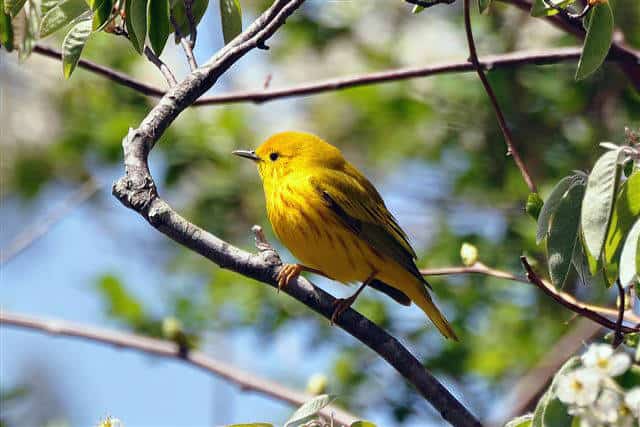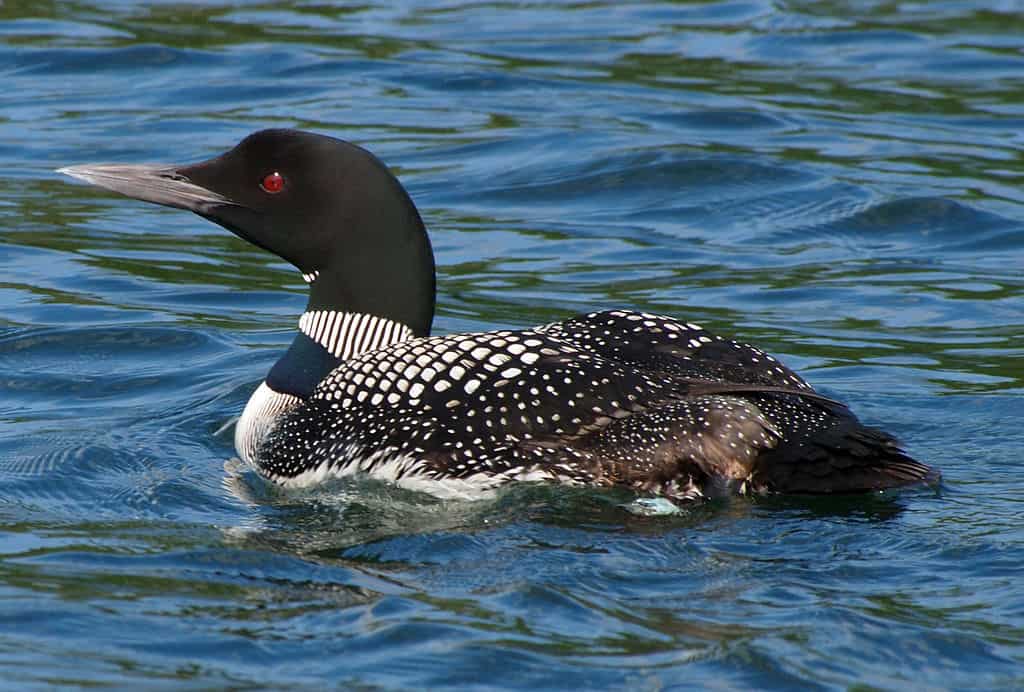Look For
The Canada warbler is a small songbird that is sometimes nicknamed the “necklaced warbler” due to the black ring of streaks across its chest. The throat, chest, and belly are yellow, contrasting with a dark gray back and tail with a white underside. The Canada warbler’s face has a yellow line connecting its eye and beak and has white eyerings. The female Canada warbler looks similar to the male but has lighter, more grayish streaks.
Listen For
The Canada warbler’s song is crisp and loud, starting with a short chip and flowing into a series of rapid, warbling notes.
Find It
As the name suggests, Canada warblers breed in a vast stretch across Canada from southeastern Yukon to Nova Scotia. It can also be found in the northeastern parts of the United States from northern Minnesota to New England, sometime stretching down south in the higher Appalachian region as far south as Georgia.
They prefer to inhabit moist, shady forest environments and nest in thickets near streams, swamps, deep ravines, or in deciduous second-growth. During migration they travel south through Central America before settling in moist thickets in the northwestern parts of South America and the Andes Mountains.
Feeding Behavior
The Canada warbler feeds primarily on insects, including mosquitoes, beetles, cankerworms, moths, and flies. It also has been observed eating spiders, snails, and some fruit. The Canada warbler is a dedicated forager, its primary feeding technique involving flushing insects from plants and flying out to catch them. Like most other warblers, it also forages on the ground, prodding among fallen leaves. During its in South America it forages in higher, denser foliage alongside other flocks of various birds.
Nesting Behavior
The female Canada warbler builds a nest in dense cover on or near the ground, usually no higher than 6 inches above the ground. A nest is constructed of roots, bark, weeds, and ferns and is often found near moss-covered logs, roots of fallen trees and hollows in the banks of streams.
The female lays 3 to 5 eggs that are off-white with dark spots. The eggs are incubated for roughly 12 days before hatching. Both parents care for the young before they leave the nest after roughly 10 days, after which dependency can last an additional two to three weeks.




